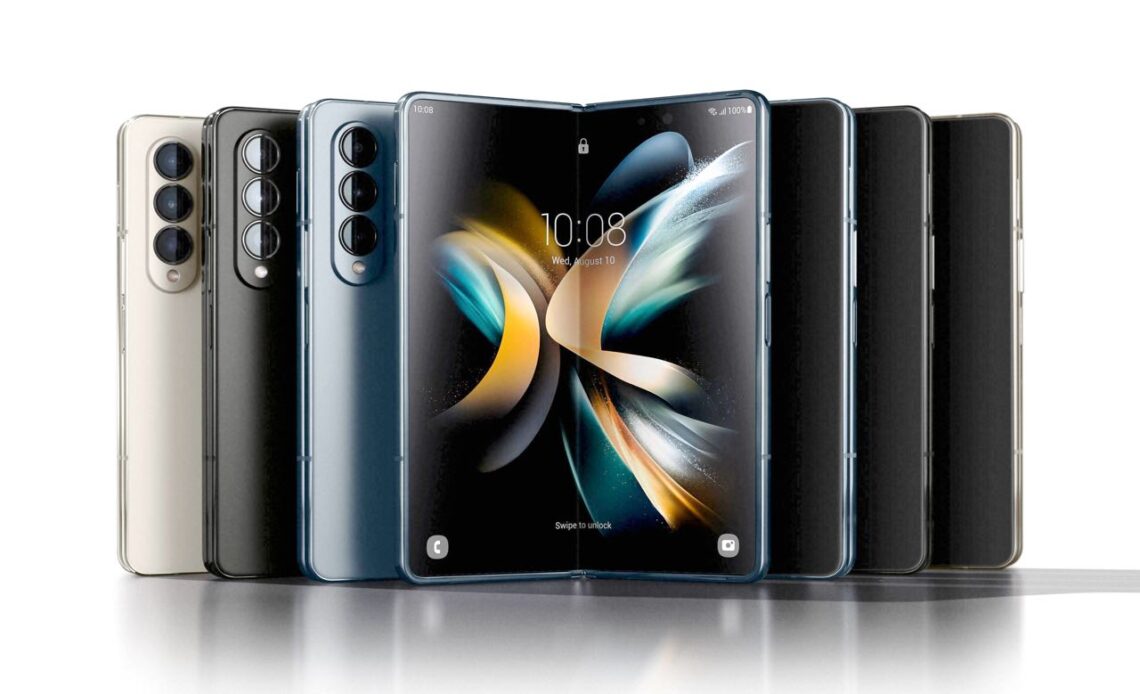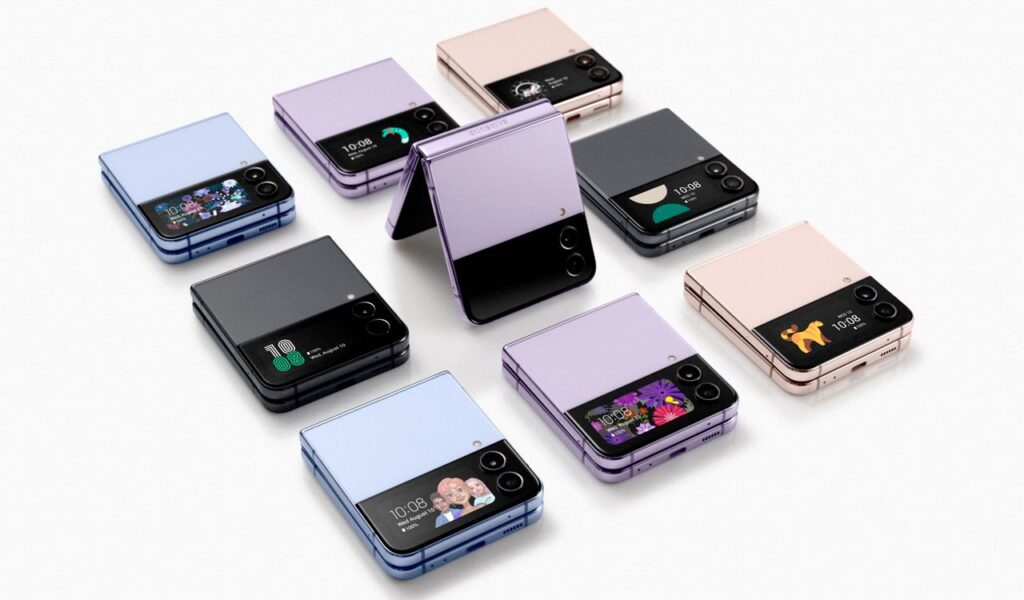
Above: Samsung’s Galaxy Fold 4. Photos courtesy Samsung.
BitDepth 1367 for August 15, 2022
On Wednesday, Samsung unveiled the fourth generation of its folding smartphone devices, the Flip 4 and Fold 4.
First introduced in 2019, the company has unveiled improvements and iterations on the hinge and screen technology.
Samsung is now on the third version of its compact Flip and the fourth version of its tablet challenger, the Fold, and with every new version has been aggressive about addressing the challenge of putting two slabs of metal together, connecting them with a hinge and laying a foldable screen across the two.
With each revision of these devices, the company has pointed to enhanced machining of the hinge mechanism and its increased resistance to water and dust, but neither device is as intrusion resistant as a single slab of aluminium and glass fused under pressure.
Of the two phones announced last week, the Flip continues to feel like the best version of the technology.
The differences between the three Fold versions are subtle. All successfully take a standard smartphone form factor and fold it into two squares, creating a thick but intriguing block of aluminium and glass.
It also makes for some odd selling points, urging the company to boast about the value of using the device folded at a right angle and being able to frame a full-resolution selfie using the rear camera and the tiny cover screen on the device.
It all seems like a bit of reach. Has anyone ever decided that a must-have feature of a smartphone is that it being able to fold it so you can view half the screen?
Still, the company has gone in hard to sell the Flip as a fashion accessory, offering four base colours and a bespoke option to mix and match colour options for the top and bottom halves on the new edition. There are also accessories that emphasise the fashionable over the practical.
Unfortunately, the Flip remains a high-end fashion statement at a US$999 price, a sum that gets you the better-specified S22 Ultra, which doesn’t fold but you’ll be able to buy a nice kickstand case with the change.

The rationale for the Fold 4 is more nebulous. The device has two functional screens, one the size of a standard smartphone screen, the other, almost square at 15.5 cm x 13 cm, after opening the device.
It’s a handsome screen for anything that benefits from the increased size of the display (https://bit.ly/3xhPhX7). Word processing, browsing the web and working with a spreadsheet are all eminently practical.
Some apps make good use of the increased size of the screen. Most don’t and the increased screen size makes for a hefty smartphone thats essentially two S22 Plus bodies connected with a hinge.
That demands a clear pay off. Not only is the Fold 4 as big as two S22 Plus devices, it actually costs a little bit more than a pair at US$1800.
Samsung is giving the foldable smartphone space a serious effort. It feels a lot like when Samsung introduced the Note, a huge phone among the sleek pocketable devices of its day.
But there are notable differences in execution that the company isn’t facing down. The Flip and particularly the Fold are really expensive phones. The Fold specifically is in shouting distance of a high-end laptop.
The Note was a bit bigger for a bit more money, but the jump from the S22 Ultra to the Fold 4 is a circus-level gap, and this isn’t a price point where you try something out to see whether it works for you.
Samsung is the market leader in the space, and it expects to sell ten million foldable phones this year, but according to Statista, the company sold 69 million smartphones in the fourth quarter of 2021 alone.
It’s hard to see how the company will meet its ambitions to make foldables half of its premium smartphone sales unless it adjusts its pricing.
The sales pitches for a folding phone all collapse under commonsense evaluation. Folding your phone is an indicator that you are paying attention, but so is putting it face down or better yet, in your pocket or handbag.
Using the phone while half-folded makes for cool product photos, but you’re effectively using half the screen.
There is a tremendous cool factor to foldables. When I tested the Flip 3, folding a full-sized smartphone and slipping it into my pocket was a bit of a Bond move.
The huge screen on the Fold 3 was a tempting bit of real estate for serious writing, but it’s also really expensive acreage for a use case that isn’t a tenth of my daily smartphone use.
Your measures may vary and really, vanity is as good a measure in this price range as any, but it’s hard to see how foldable smartphones at the price point their machining demands will be anything more than a profitable niche product.


